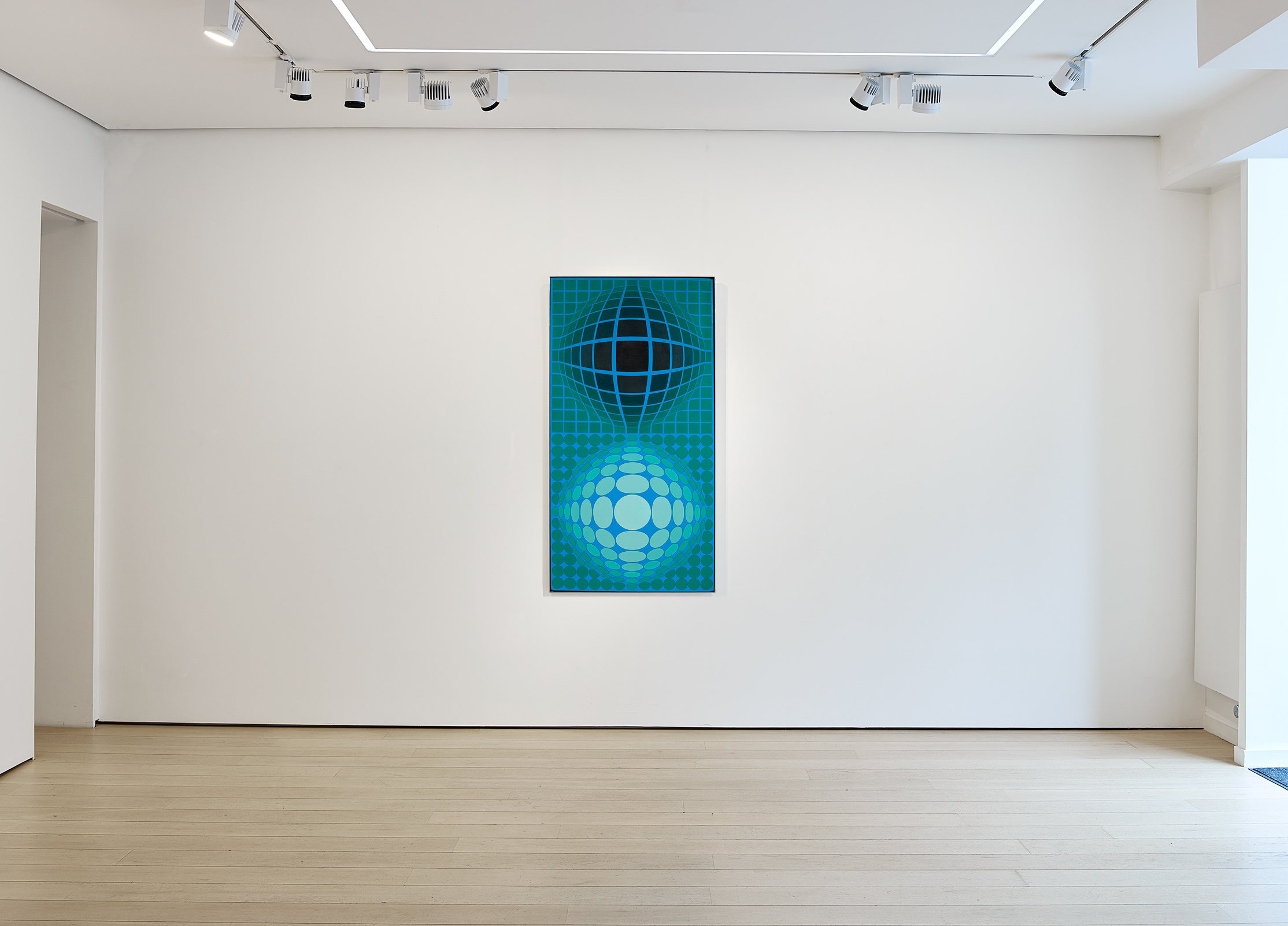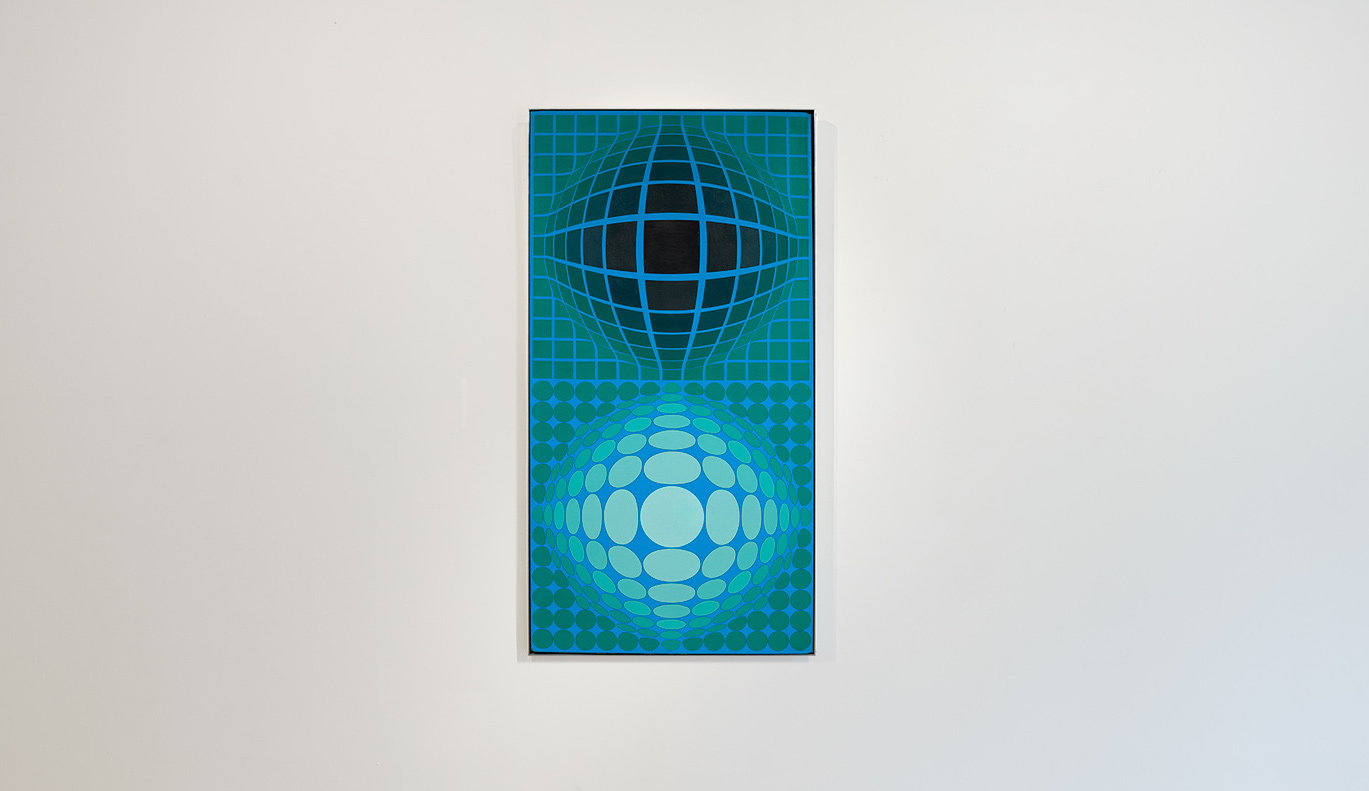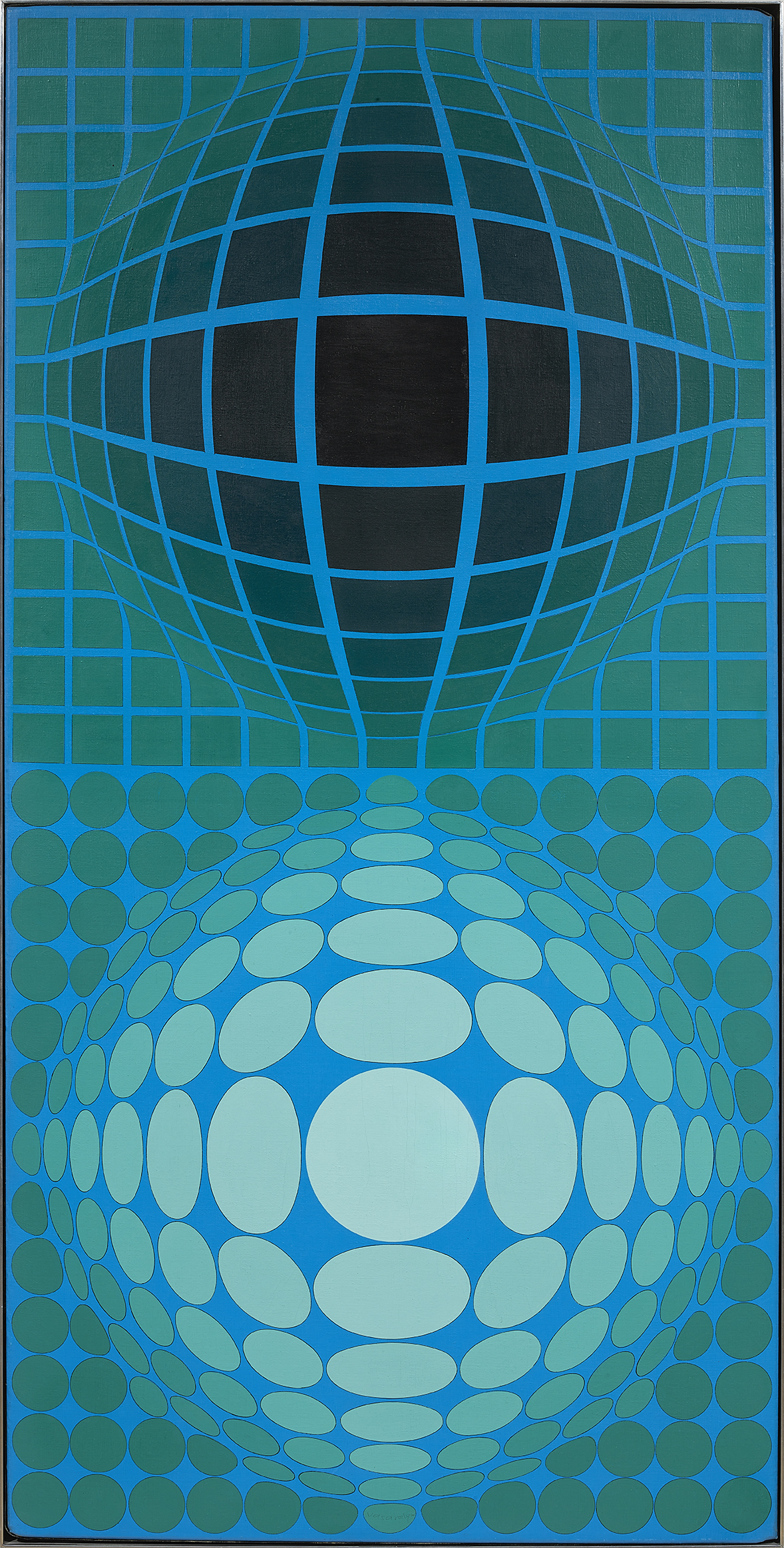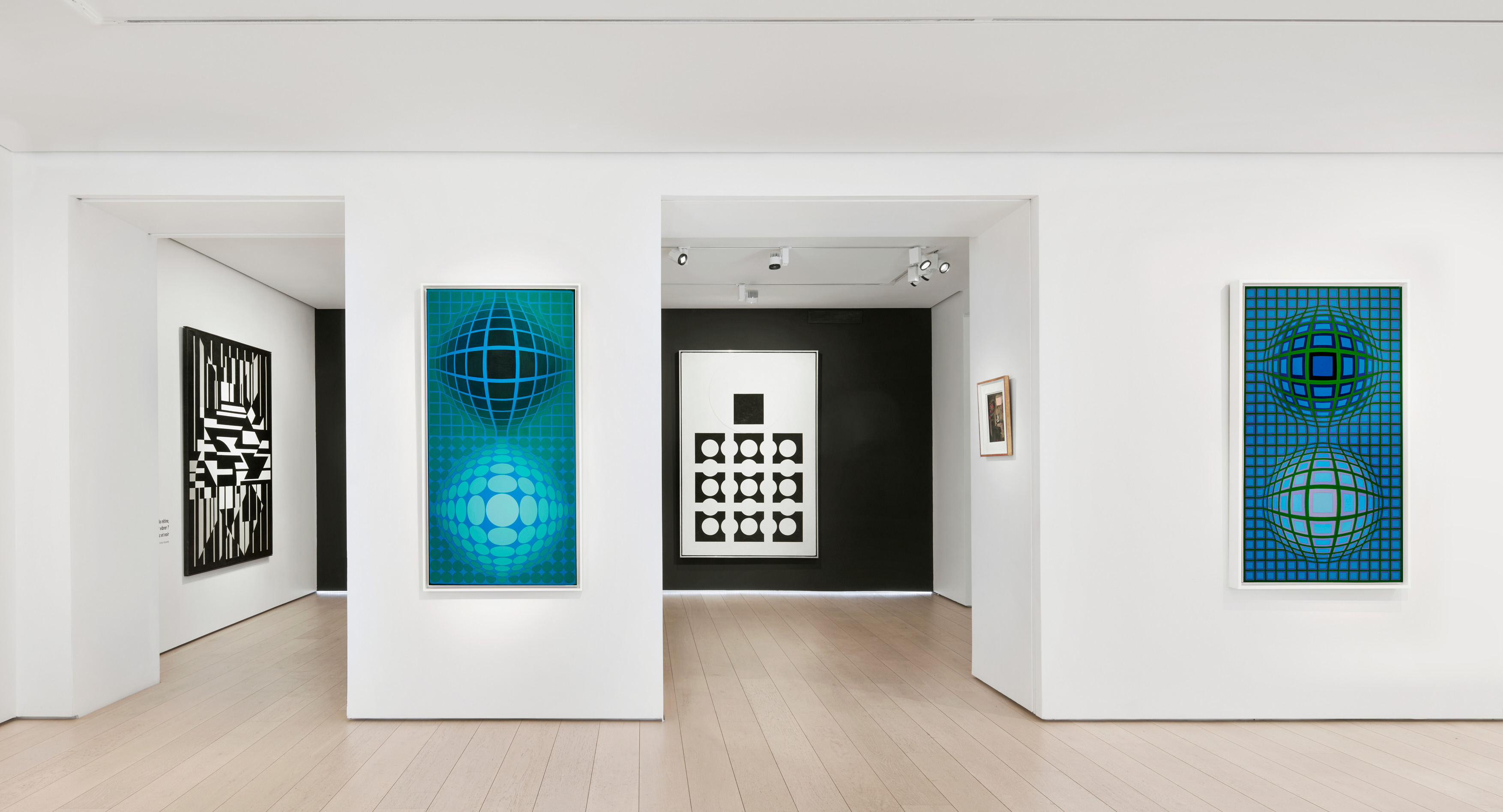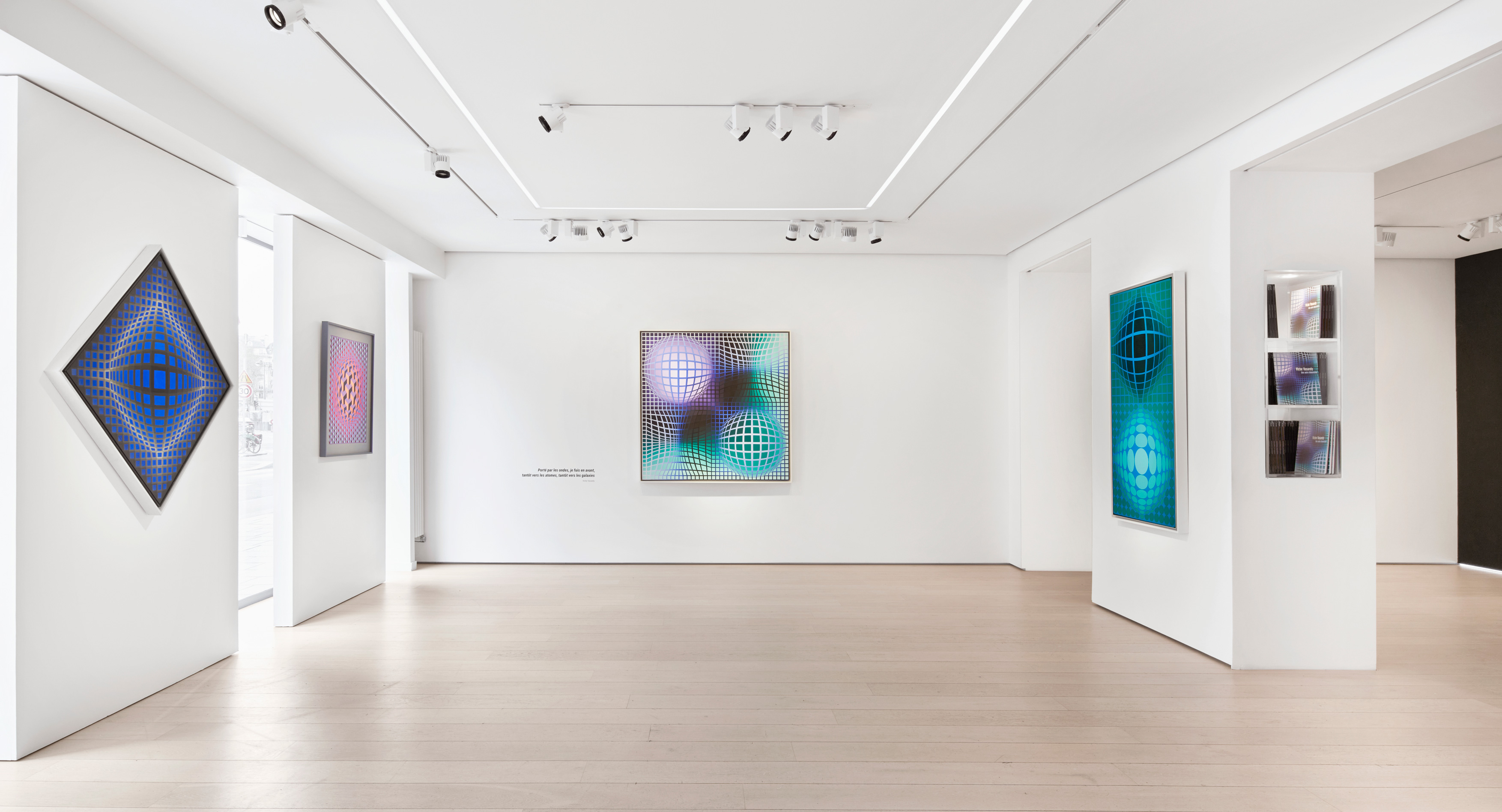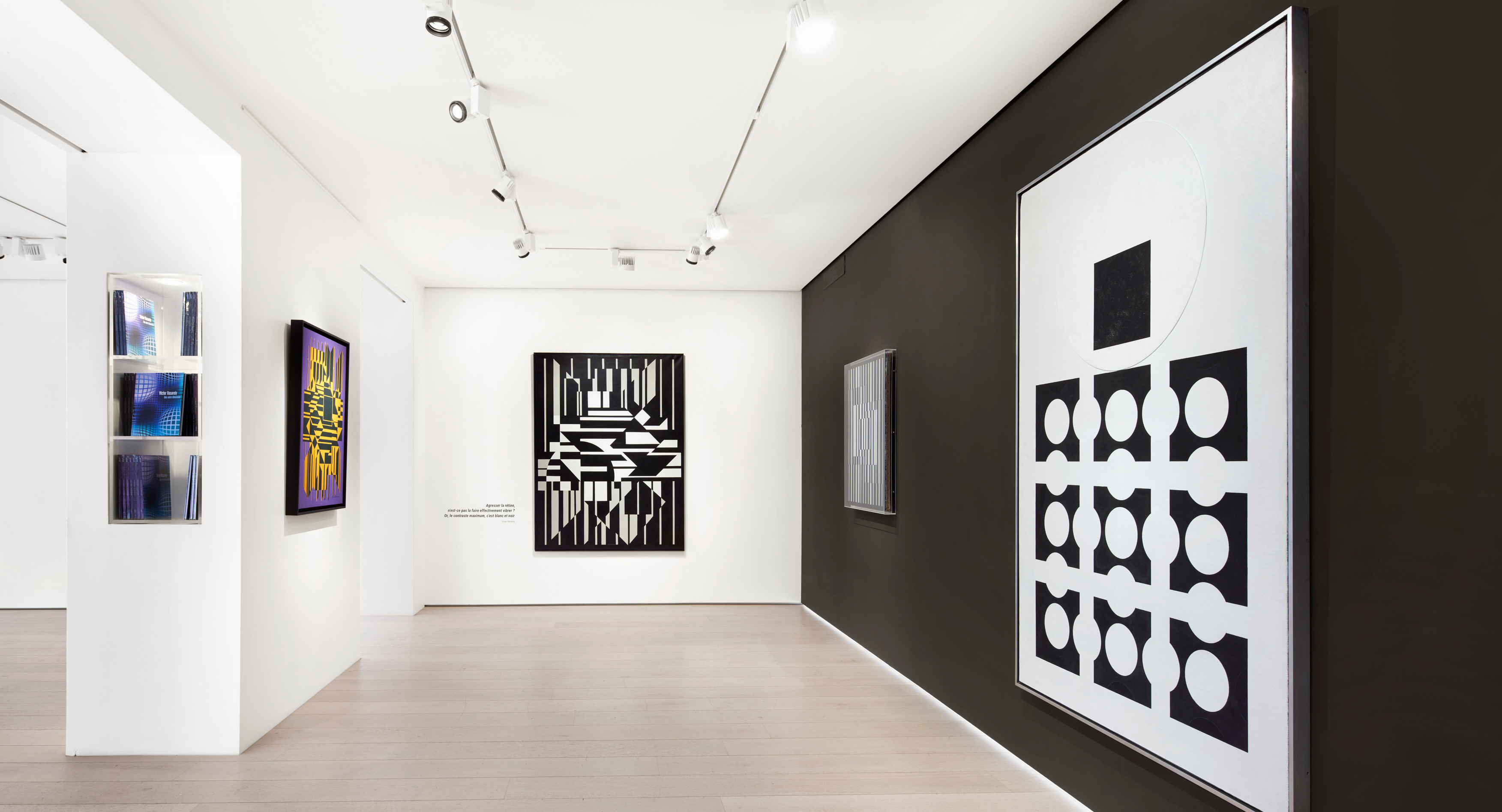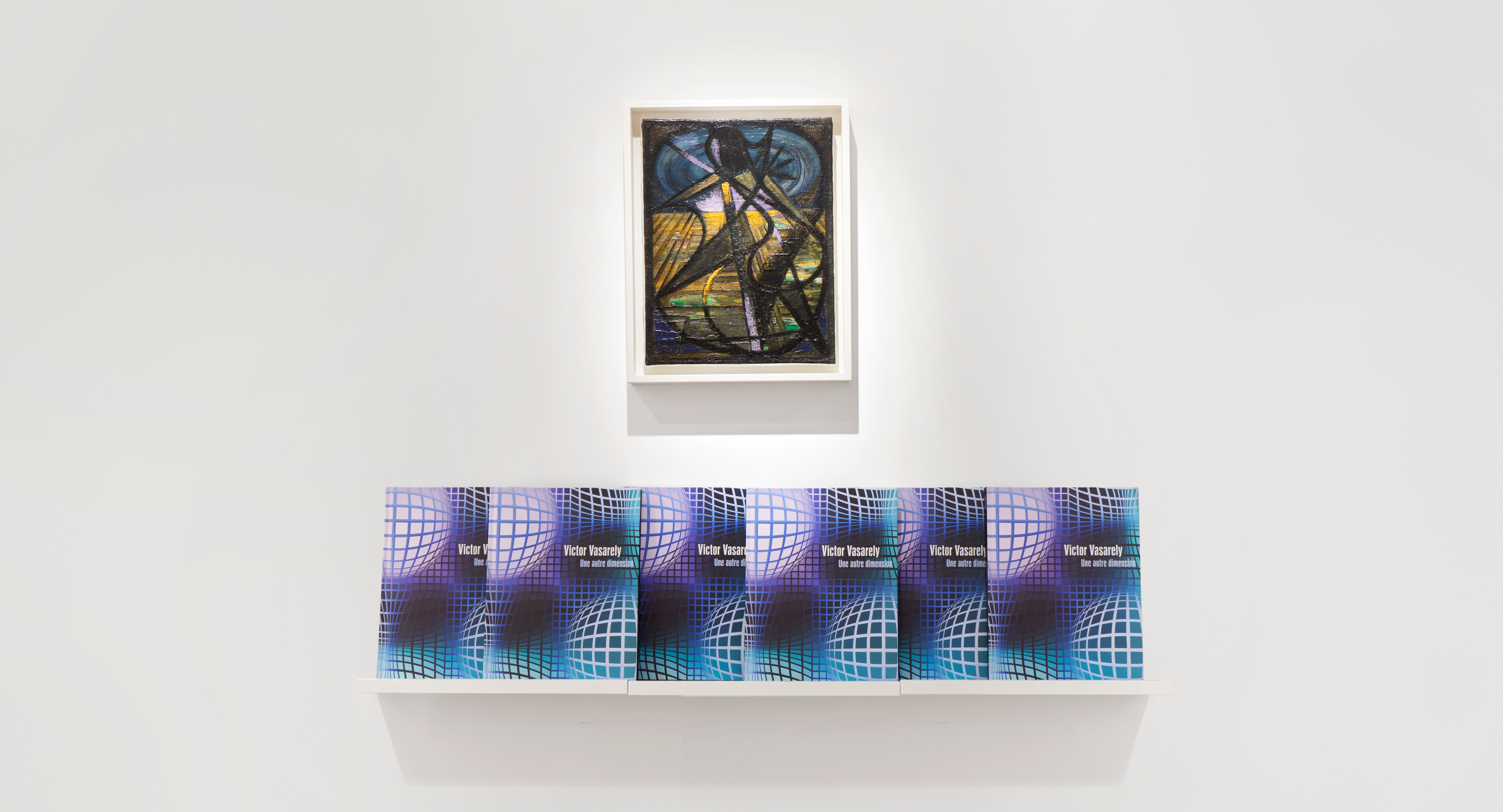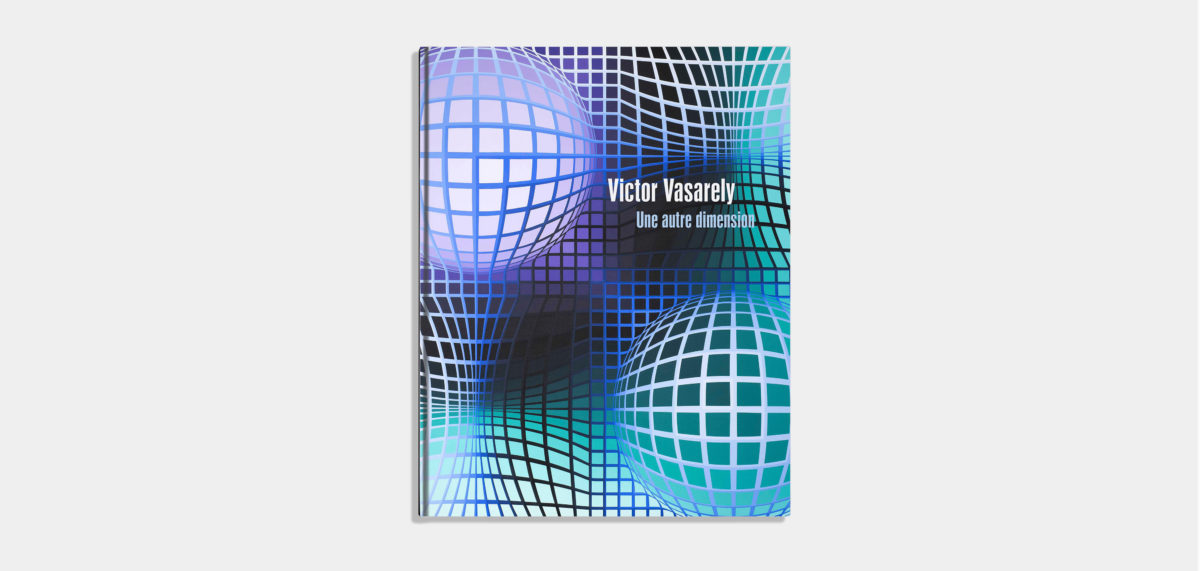TEASER
Victor Vasarely | Another Dimension
March 23rd – May 12th, 2023A&R Fleury gallery is pleased to invite you to this which aims to illustrate the lasting nature of Vasarely’s art by highlighting the scope of his inventions. This project focuses on two periods and themes which are very different from the visual point of view, but entirely linked from the historical one.
The black-and-white period at the end of the 1950s, represented in the exhibition by three major works, reveals the artist’s visual concerns by means of the line and the square, two essential elements which hark back to his stint as a graphic designer, and which he developed to the point of their maximum deformation in order to produce an optical effect. During second key period of this project, from the mid-1960s, Vasarely embarked on a spectacular production in which he defined his “universal structures” and explored the universe of galaxies. The “Vega” series gave rise to spheres that swell to escape the frame, creating extraordinary volumes. They are the highlight of the exhibition.

Werner Hannappel, Victor Vasarely au travail - Gordes, 1972, silver print, 40 x 40 cm. © Fabrice Lepeltier
“Carried by the waves, I flee forward, sometimes towards the atom, sometimes towards the galaxies.” Beyond its hallucinated and poetic scope, Vasarely’s cosmic dream clearly attests to his desire to escape the material limits of the artwork to reach the unfathomable. In the 1970s, driven by this utopian project, which more concretely corresponded to the desire to make art accessible to everyone by incorporating it into architecture and urban planning, Vasarely became one of the best known artists of his time. The artist, who was nicknamed “The Pope of Op” at the famous exhibition The Responsive Eye (1965, MoMA, New York), is now considered to have been one of the major French artists of the second half of the twentieth century. The works gathered together in the exhibition at Galerie A&R Fleury, Victor Vasarely, une autre dimension, give us a good insight into the talent of Vasarely, who profoundly marked the 1960s and 1970s with his kinetic abstractions and spectacular optical effects.
In the second half of the 1950s, the artist began exploiting the possibilities of this optical movement in a masterful series of works painted exclusively in black and white (1954-1963), perfectly illustrated by three paintings brought together by Galerie A&R Fleury. As demonstrated by Tlinko II (1956-1959), Vasarely liked to use the organisational principle of the grid to better disrupt its layout. By rotating some squares on their angles or replacing them with diamond shapes, he achieved an optical dissolution of the forms and subjected the plane of the painting to a vibration.
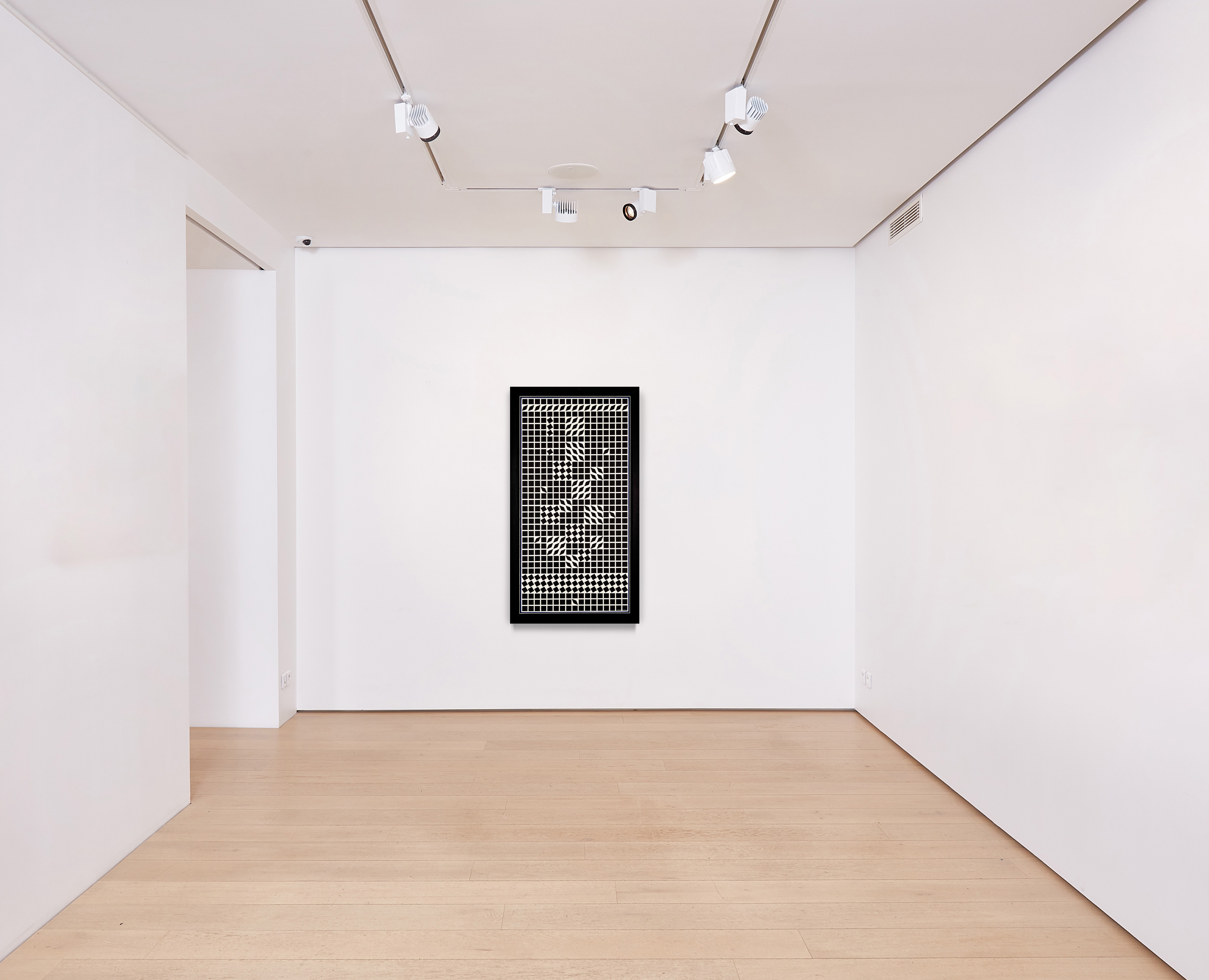
Victor Vasarely, Tlinko II- 1956-1959
“To attack the retina, is that not actually to make it vibrate? Well, the maximum contrast is black and white”
Victor Vasarely
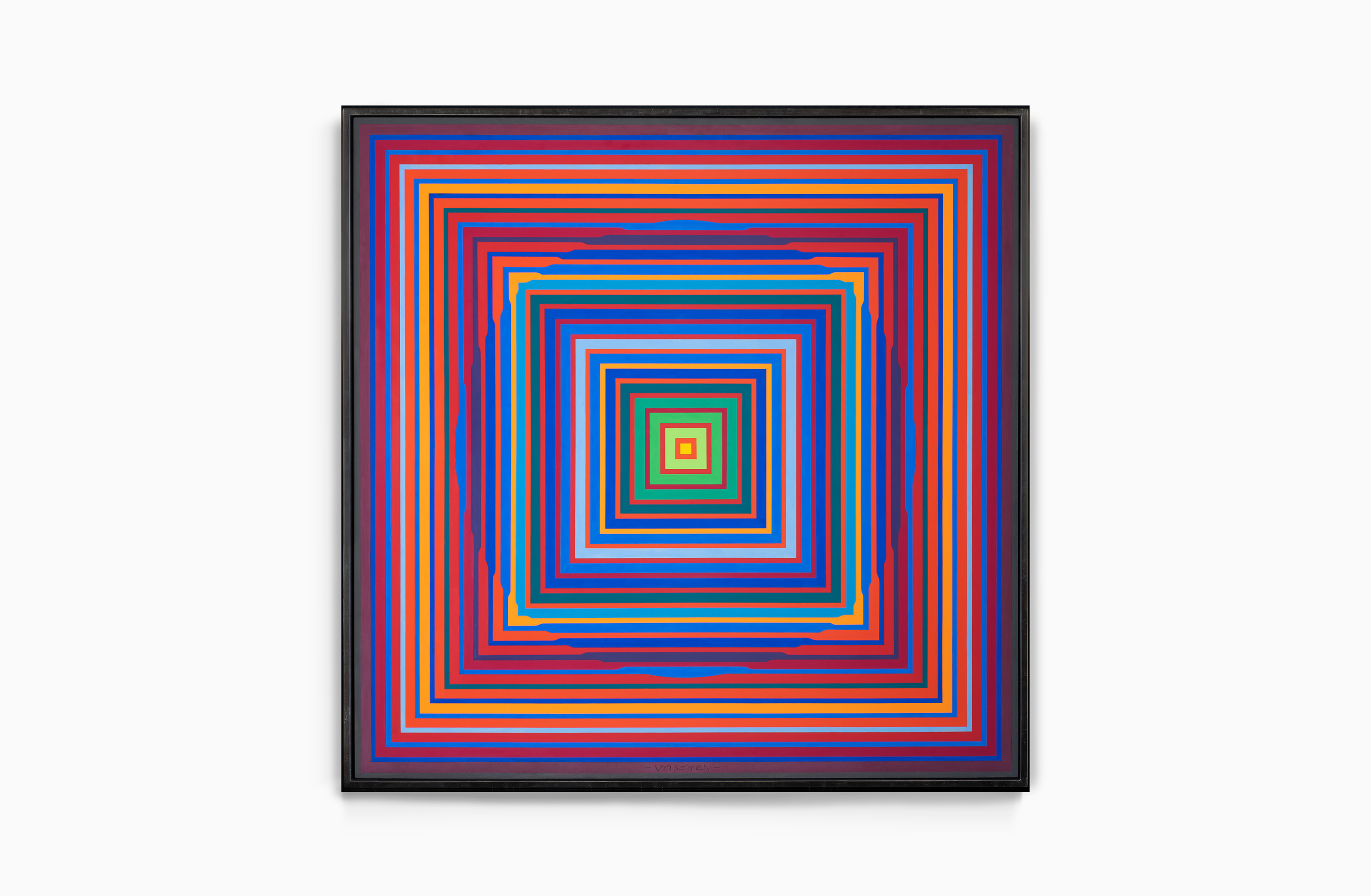
Victor Vasarely, GAMMA-MC- 1968
From 1960, Vasarely, a true master of the visual revolution he had established, reintroduced colour in the works of “Folklore planétaire,” where the development of a universal visual alphabet enabled infinite pictorial combinations of “Formes-couleurs.” But the artist, who did not wish confine himself to a system, moved away from these combinatorial processes from 1964 in order to explore other visual worlds. Thus, with Gamma MC (1959-1968), Vasarely became interested in the dynamogenic power of the colours enmeshed in the labyrinthine network of concentric squares. He reinforced the resulting illusion of depth by superimposing a blue circle whose undulating contractions attract the gaze towards the focal point of the painting.

Victor Vasarely, Menny - 1965
Conversely, the diptych Menny (1965), rather than targeting the gaze, invites its free circulation by using visual processes which culminate in a greater visual fluidity: waves of light diagonally cross the checkerboard compositions from one end to the other, painted in shades that range from yellow to emerald green to very dark blue. In a play of inverted symmetry, the tones of the composition of the top progress in a gradient according to a movement that brightens from the periphery towards the centre, and vice versa in the lower composition.
Vasarely very much enjoyed varying these effects of visual echoes, of image-mirrors, in the format of the diptych, as evidenced by Zett-Oltar (1974-1977) and Oltar-Zoeld (1970-1973), works from the early 1970s whose very subtle shades of blue-green exude a sense of infinity. Here he plays with the central deformation of grid structures to give rise to spectacular swellings, whilst the circles turn into ovals in the lower part of the composition. By means of these swollen forms that exceed the frame, Vasarely, in his own words, created his “own energies” in order to reach the “interstellar spaces” and offer the spectator a kind of “intuitive equivalence of what can be perceived before the infinity of the stars in light of modern science.”
“Carried by the waves, I flee forward, sometimes towards the atom, sometimes towards the galaxies”
Victor Vasarely
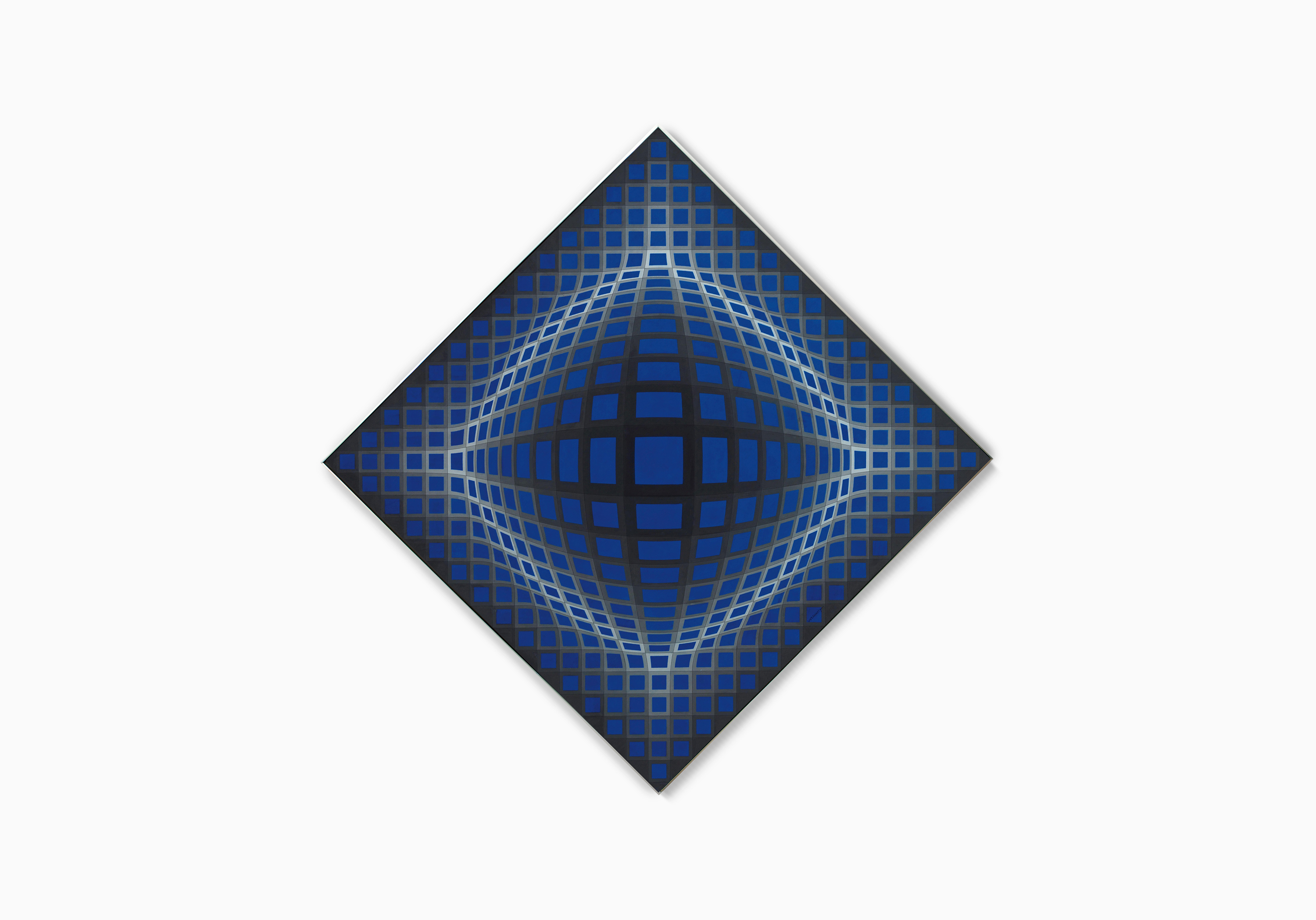
Victor Vasarely, VEGA-BLEU - 1968
Vasarely indulged in these cosmic reveries with the series of “Vega,” initiated in 1968, titled by analogy with the star of the same name. The “Vega,” he writes, “have something monstrous and disturbing about them. They are quite distinct from my other works, and they reveal a baroque dimension not far removed from pop art, at least in their external appearance. They seem to be breathing heavily, like the ‘Pulsars,’ which were born from a gigantic explosion 15 billion years ago.” With Vega-bleu (1968), the crystalline grid appears to be transformed into a sphere under the effect of cosmic cataclysms
Extract from the critical text by Domitille d’Orgeval
Artworks
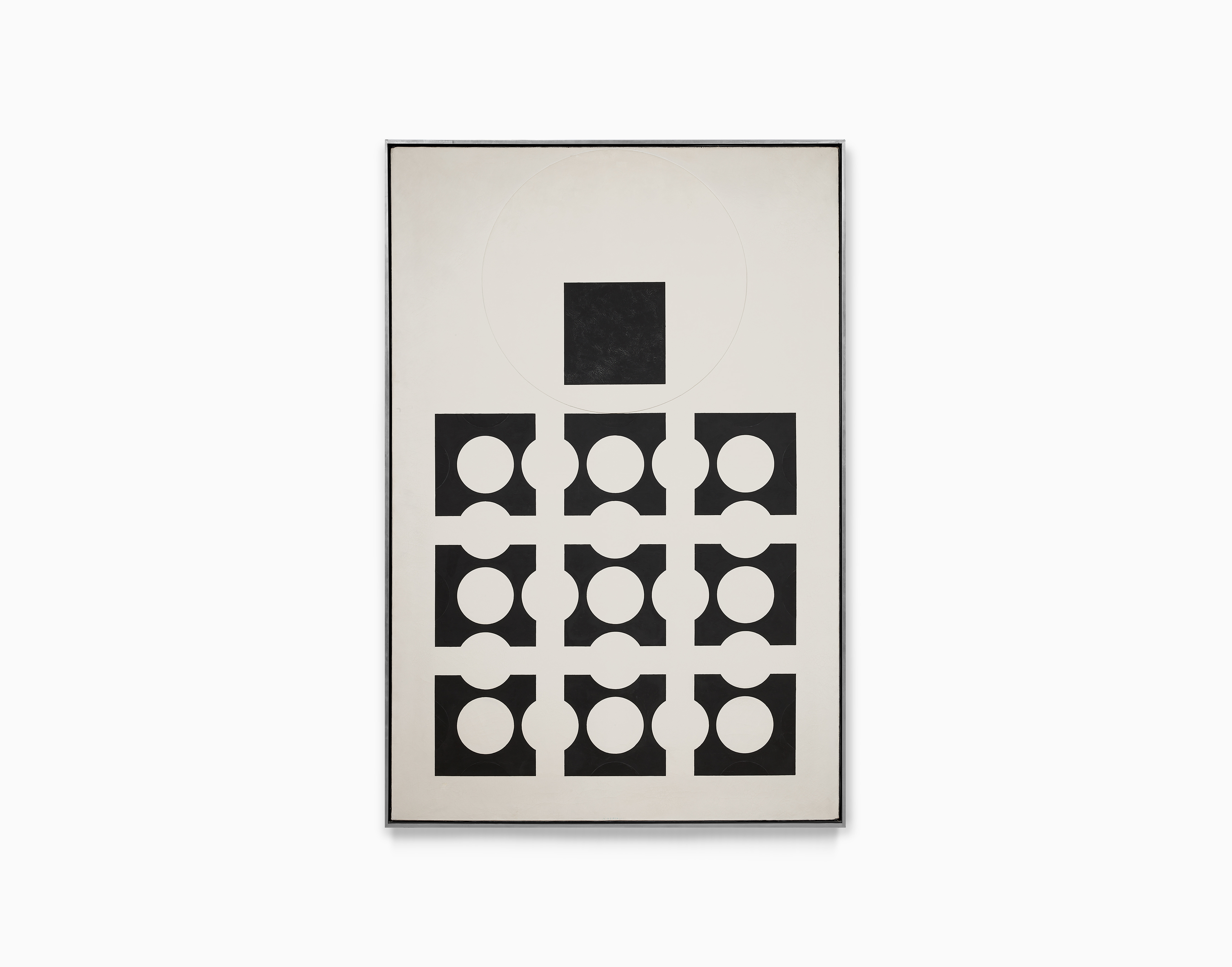
Victor Vasarely, CEPHEI
1959

Victor Vasarely, MENNY
1965
Victor Vasarely
VEGA-BLEU, 1968
Tempera on panel
31 7/16 x 31 7/16 in
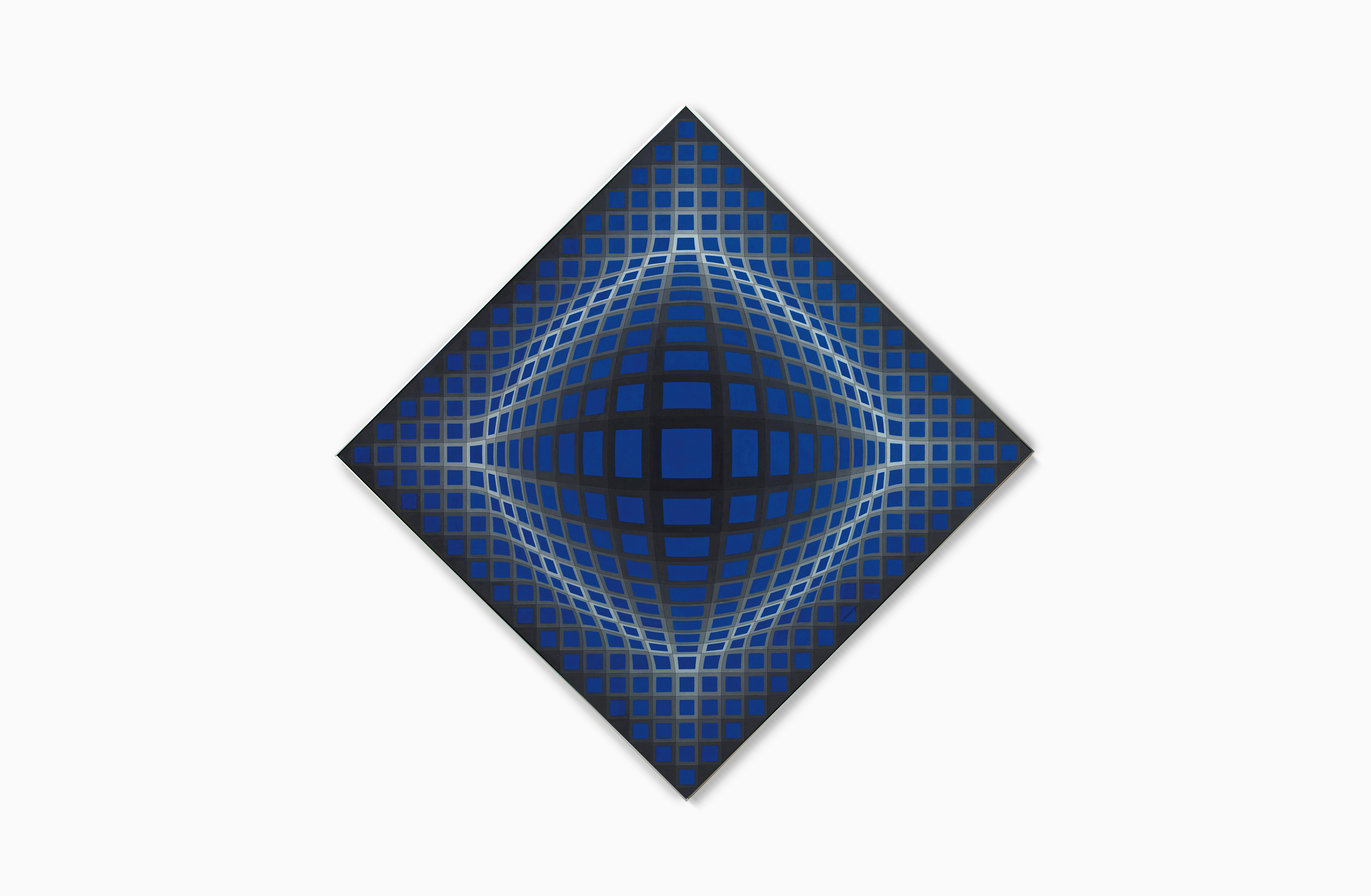
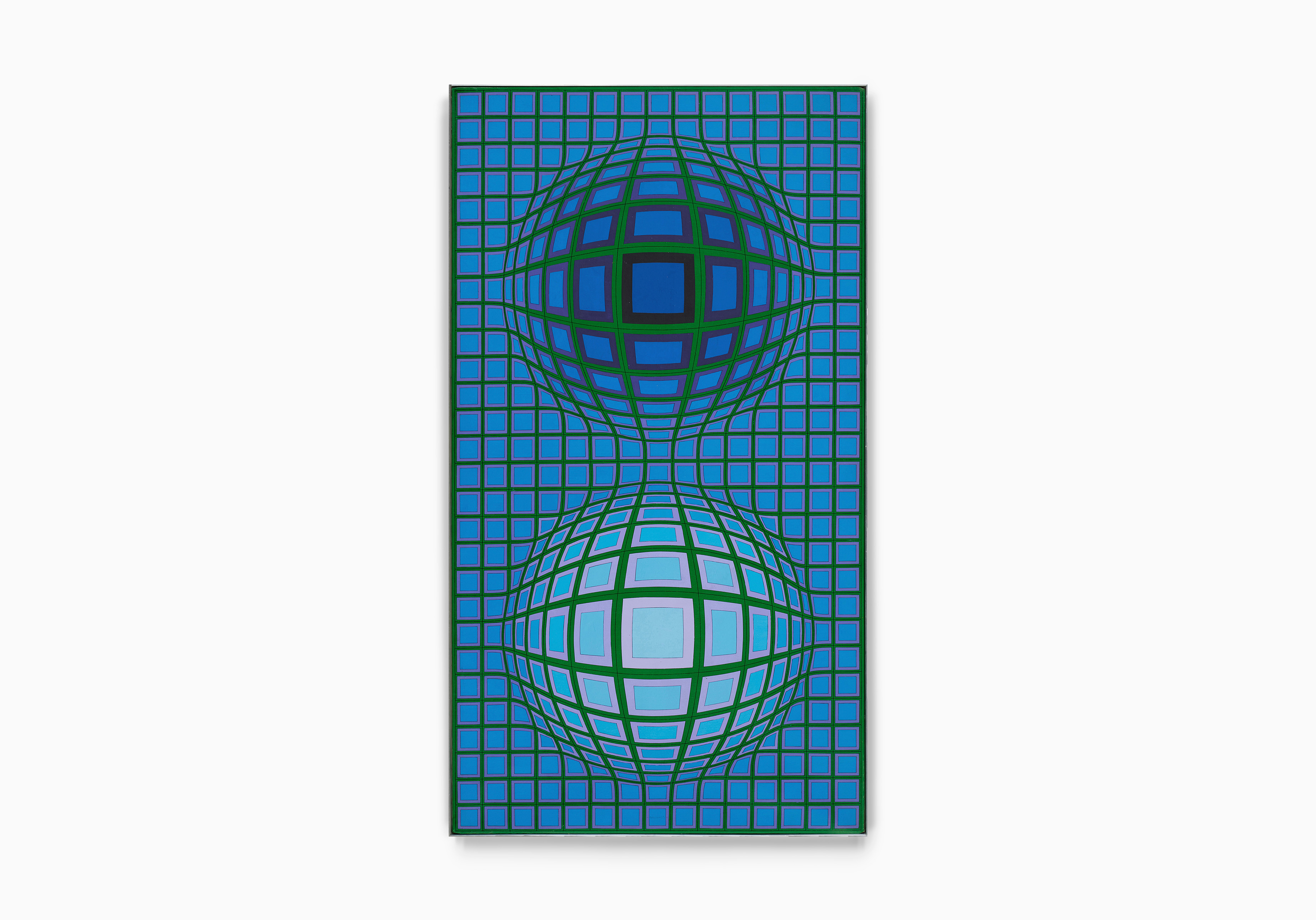
Victor Vasarely, ZEET-OLTAR
1974-1977
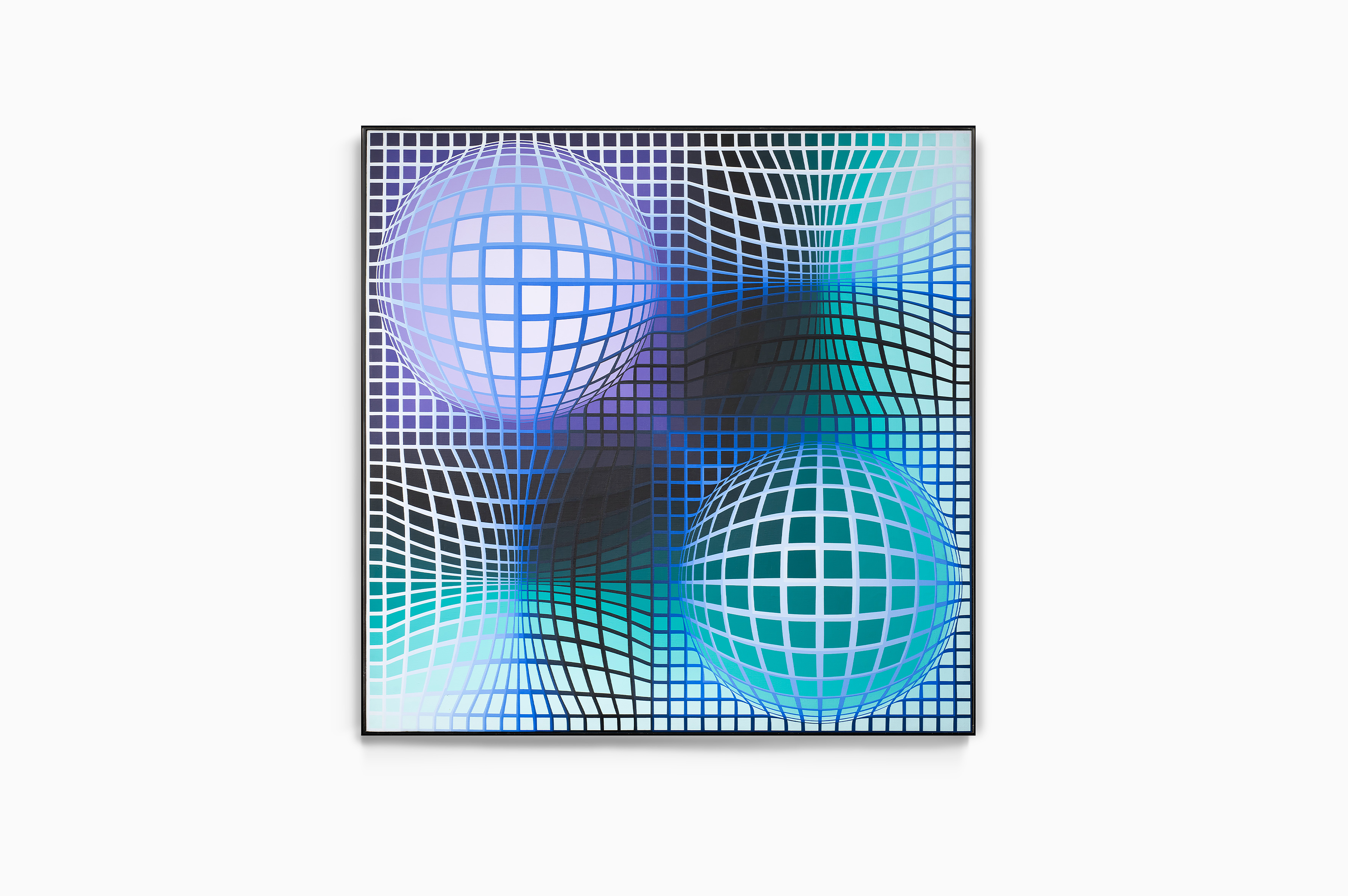
Victor Vasarely, Vega-P
1979 - c.1990
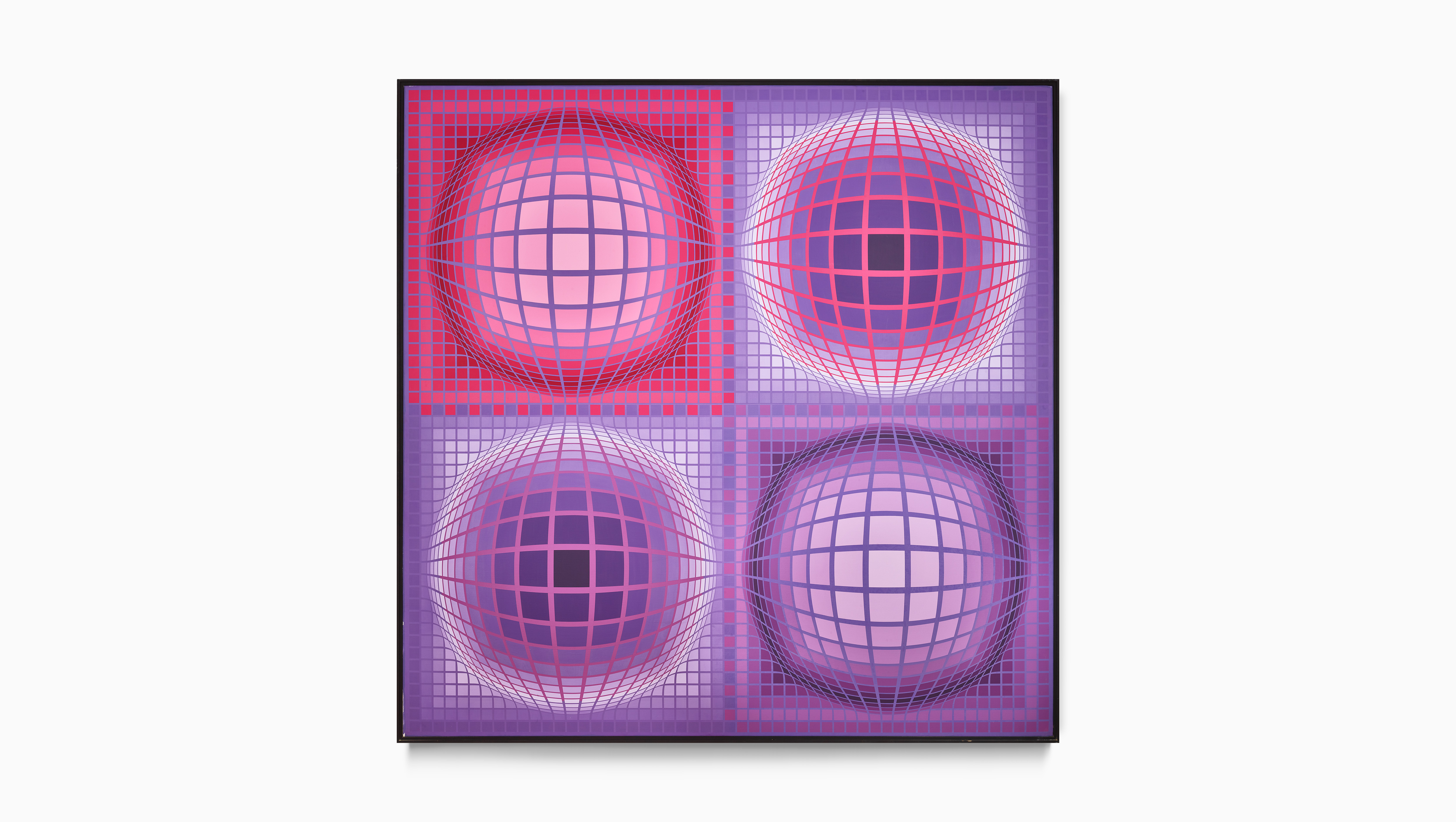
Victor Vasarely, ERRO
1986
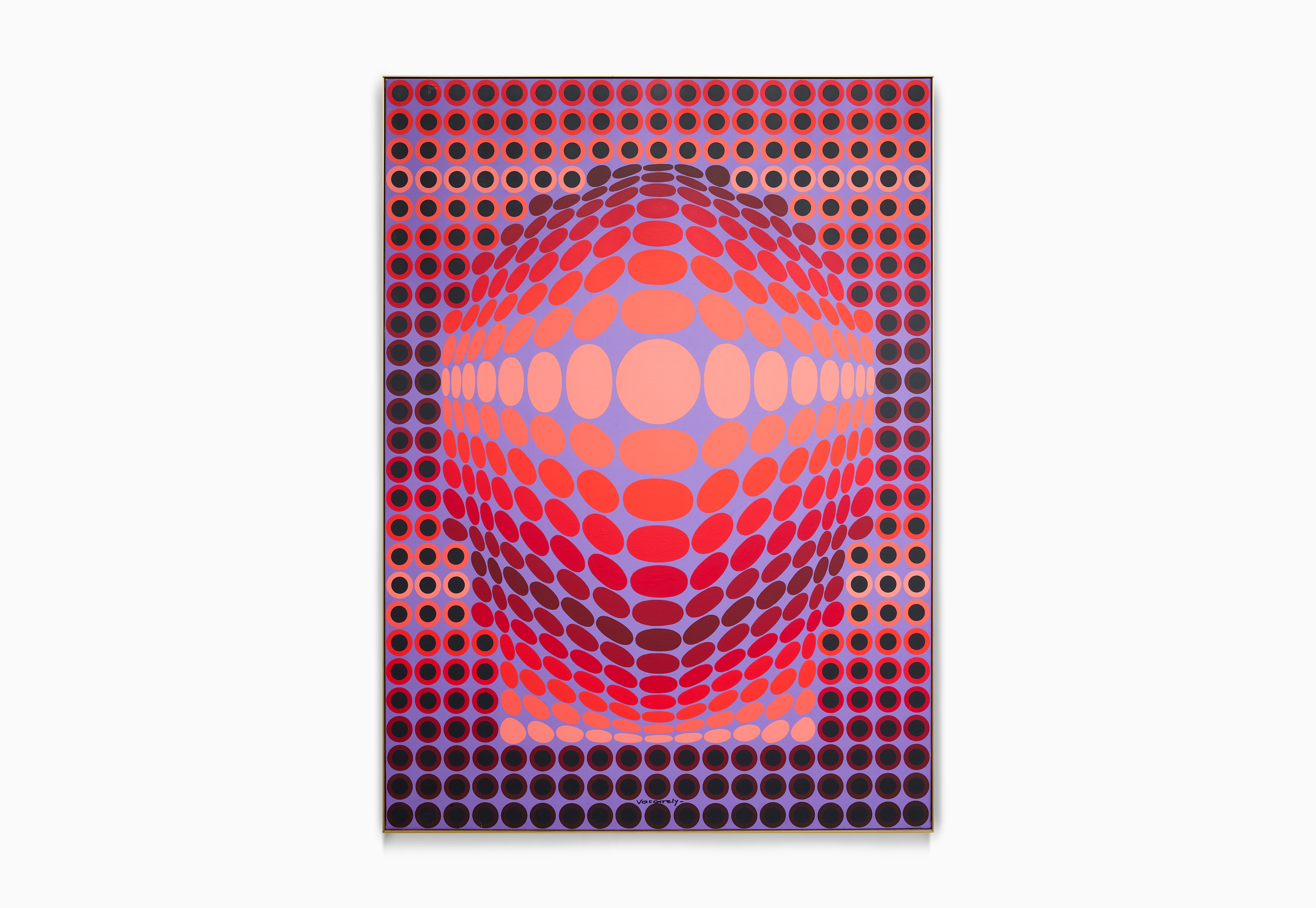
Victor Vasarely, OSCOP
1988
Artists
- Karel Appel
- Victor Brauner
- Alberto Burri
- Alexander Calder
- Lynn Chadwick
- Geneviève Claisse
- Claudine Drai
- Jean Dubuffet
- Jorge Eduardo Eielson
- Sam Francis
- Simon Hantaï
- Hans Hartung
- Le Corbusier
- Fernand Léger
- Mao Lizi
- Georges Mathieu
- Alicia Penalba
- Serge Poliakoff
- Judit Reigl
- Jean-Paul Riopelle
- Gérard Schneider
- Pierre Soulages
- Geer van Velde
- Victor Vasarely
- Bernar Venet
- Claude Viallat
- Maria Helena Vieira da Silva
- Ossip Zadkine


